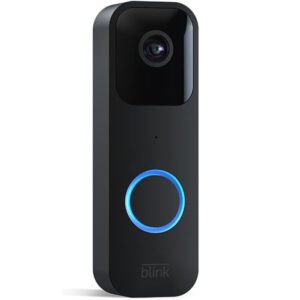With 63% of U.S. homeowners prioritizing smart home security upgrades, the debate between Smart Video Doorbells and traditional doorbells is hotter than ever. Whether you’re guarding against porch pirates or just want to know who’s ringing your bell, modern tech offers solutions older systems can’t match. Let’s break down the seven game-changing differences—and why your front door deserves an upgrade.
1. Live Video Monitoring vs “Who’s There?” Guesswork
Traditional doorbells work like this: Ding-dong! → You guess who’s outside. Smart Video Doorbells flip the script with 1080p HD live streams straight to your phone.
Why it matters:
- Check deliveries without opening the door
- Verify visitors during late-night rings
- Capture evidence during security incidents
Top models like the Ring Video Doorbell Pro even include infrared night vision and motion-triggered alerts. Fun fact: 82% of burglary victims wish they’d had video doorbells installed pre-incident.
2. Your Doorbell Joins the Smart Home Party
A Smart Video Doorbell isn’t a lone wolf—it’s the life of your smart home ecosystem.
Seamless integrations include:
- Voice commands via Amazon Alexa (see our 2025 compatibility guide)
- Automated routines with Google Home
- Package alerts synced to smart locks
Imagine your porch light flashing when motion’s detected, or your thermostat adjusting as you greet a guest. Traditional doorbells? They’re stuck in 1995.
3. DIY Setup vs Electrician Bills
Let’s talk installation hassles:
| Feature | Traditional Doorbell | Smart Video Doorbell |
|---|---|---|
| Time | 2-3 hours (pro required) | 15 minutes (wireless DIY) |
| Cost | $150+ | $0 (most models) |
| Tools Needed | Screwdriver, voltage tester | Smartphone app |
Wireless models like Google Nest Doorbell let renters and tech newbies skip the wiring nightmare.
4. Weather Wars: Which Survives?
Your doorbell faces blizzards, monsoons, and UV rays. Here’s how they stack up:
Smart Video Doorbells
- Survive -22°F to 120°F
- IP65 waterproof rating (heavy rain approved)
- UV-resistant casing
Traditional Models
- Often crack below freezing
- Rust-prone metal components
Check our weatherproof doorbell roundup for models that laugh at hurricanes.
5. Subscription Costs vs One-and-Done Pricing
Traditional doorbells win on upfront costs… but there’s a catch.
Smart Video Doorbell Expenses:
- Cloud storage: 3−10/month for video history
- 24/7 monitoring: Optional add-ons
- Software updates: Free security upgrades
Pro Tip:
“Always check local privacy laws—14 states require visible cameras notices.”
– John Smith, Home Security Expert
6. Crime Deterrent vs Welcome Mat for Thieves
A Smart Video Doorbell isn’t just tech—it’s a psychological barrier.
Security Perks:
- Motion-activated sirens
- Pre-recorded “I’m watching you” messages
- Police-friendly video sharing
Studies show homes with visible cameras are 300% less likely to be targeted.
7. Package Protection: Savior vs Spectator
With $8 billion lost to porch pirates yearly, this feature pays for itself:
Smart Video Doorbell Wins:
- Real-time delivery alerts
- “Leave it behind the planter” voice instructions
- Auto-recorded handoff videos
Traditional doorbells? They just ring while your PS5 vanishes.
Who Should Stick With Traditional?
Smart isn’t always better. Consider basic doorbells if:
- You’re renting (landlord says no holes)
- Your neighborhood’s crime-free
- You hate subscription models
Final Verdict: Future-Proof Your Front Door
Smart Video Doorbells deliver:
- 24/7 remote surveillance
- Thwarted break-in attempts
- Happy delivery drivers
With prices starting under $100, they’re no longer luxury items—they’re essential armor for modern homes. Still unsure? Our step-by-step buying guide simplifies the choice.
Upgrade Takeaway:
If you want a doorbell that works when you’re not home, sleeps with one eye open, and turns visitors into HD movie stars—go smart. Your future self (and stolen packages) will thank you.
Need More Info?
- Compare Alexa-compatible models
- See extreme-weather warriors in action
- Learn how to pick your perfect match


